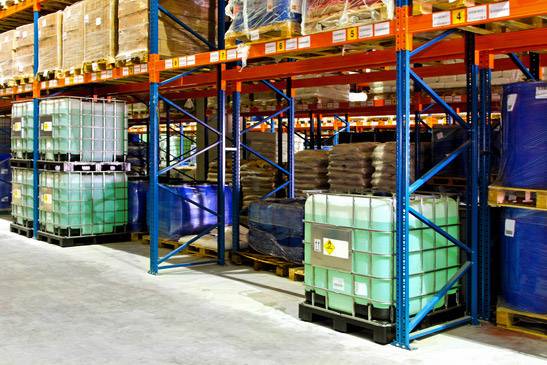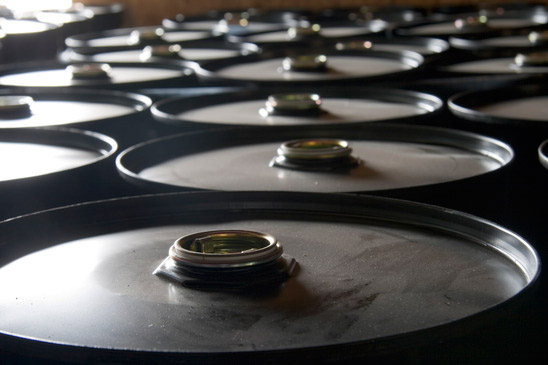Liquid Spill Prevention Best Practice
Liquid spills are one of the most environmentally detrimental and damaging issues that a business can face. When a liquid spill occurs, you have a duty to rectify the problem and contact the proper regulatory authorities. The inconvenience of a spill is a waste of resources for most business owners. The good news is that there are a number of spill prevention measures that you can take advantage of to protect yourself and your business of such a burdensome hazard.

Identifying Spill Risk
The first step in liquid spill prevention is to identify the risk. By identifying the potential spill risk, you are able to substantially mitigate the probability of a spill occurring because you will be able to take the right preventive measures. The main factors that affect the spill risk of chemical, non-chemical, and flammable liquids include the volume that you are storing, the substance, the security of the containers, and the manner of which the substance is transported if transportation occurs.
In addition to the above, your spill risk may increase Due to many factors such as:
- Where the item is stored
- If heavy traffic courses through the area
- If decanting liquids is a part of your business
Once you consider each of these factors that can affect the spill risk, you want to employ preventative measures that are geared towards chemical liquids, non-chemical liquids, and flammable liquids.
Spill Containment Products – Bunding
When you consider how to prevent liquid spills in the workplace, you’ll find that one of the more ideal solutions is liquid spill containment products. There are three key types of storage products:
If you are just starting out in the liquid containment business, then the term “bunding system” may be largely unfamiliar to you. Essentially, bunding is a form of containment that is specifically designed and built out of suitable and durable material. The bund creates a barrier to retain liquid in a safe and convenient manner. For an easier explanation, simply think of the bund itself as a barrier between the liquid container and the surrounding area. You could say the water in a swimming pool is bunded by the walls of the pool, i.e. water is contained within.
The bund is comprised of a number of components. These components include the bund wall that surrounds the storage tanks, an impenetrable floor in the bunded area, joints between the floor and the wall if needed and attached facilities that are used to safely remove liquids from within the bunded area in case of a spill. The removal process is specifically designed to facilitate safe removal that will not affect the surrounding environment.
Choosing the Type of Bund Suitable for Your Liquid Storage Requirements
When you choose a bund system, you want to make sure that you are choosing the one that is appropriate for the liquids that you are trying to contain. Below is an overview of bund systems for chemical, non-chemical, and flammable liquids.
Chemical Liquids
Chemical liquid spill prevention is perhaps one of the most serious issues that you want to be concerned with. Liquid spills are disastrous for the environment and for your workplace. Fortunately, chemical liquid bunds are an ideal preventative measure that you can take.
The main components that your bund system should have if you are storing chemical liquids are a floating roof, an internal floating raft or gas blanket to reduce the emission of harmful chemical vapors into the atmosphere. The bund itself, which is the component that protects your container, is the secondary containment facility for your container. If you have a tank farm, then you should make sure to have a bund surrounding each.
Non-Chemical Liquids
The standards for non-chemical liquids are less stringent than those for chemical liquids. Bunds for non-chemical liquids should be able to stand up to the environment, they should be accessible, and it should also help you organize your storage. In addition, take care to ensure that the bund stores 110% of the maximum capacity of the biggest tank or drum. In some cases, your local authorities might require 120% capacity and we always advise you talk to your local authority.
Flammable Liquids
Flammable liquids also require caution. The size of your bund for your flammable liquid depends on how many chemicals you are storing. In terms of materials, they should be resistant to fire and they should retain spillage that could occur. Another factor to consider is the drainage system. For flammable materials, the drainage system must ensure that the liquid is not drained into the environment. There should be a recycling or disposal system at hand.
Temporary Storage
The main type of bund discussed above is more of a permanent system. The other two types are temporary storage and transportation storage. Temporary storage is bunding for mobile equipment that is manufactured from UV protective equipment, they are suitable for maneuvering the bund on-site safely, and most transport systems can be collapsed for compact storage and transportation. There are different sizes of a temporary storage system to ensure that you are able to transport your liquids in a safe manner.
Transportation Storage
When you transport your liquids, the most convenient object to use is a bunded pallet. When you use this product, the liquid container is safely contained on the pallet and that the transporter is wearing PPE. There are usually standards for how to transport liquids throughout the work facility.
Storage and Handling Tips
The final element to consider in terms of storage and bund systems are tips that help you store and handling your liquids.
Storage Tips
- Regular maintenance of the bund is required
- Make sure that the resistant seals are not damaged
- Check for stormwater accumulating regularly
- Check the flexible joints between the bunds for any deterioration
- Check the valves, pumps, and flanges
- Implement emergency management procedures in case of a spill
- Train employees and subcontractors
- If you have a spill, detail it in your management plan, and mitigate the risk from happening again
Handling Tips
- Make sure your aware of a product safety data sheet, read it thoroughly to understand the nature of the liquid your handling..
- Make sure that there are no emissions when you transport the liquid
- Pay attention to any odd odors
- Wear protective gear when handling
- Make sure that the pallet is able to handle the transport procedure
Summary
Overall, with the right bund systems in place, you can minimize the risk of a liquid spill occurring. Liquid spills are not only harmful to your business, but they are detrimental to the environment too. Therefore, make sure that you implement the best bund system available, practice safe storage tips and handling practices, and also train your employees on the necessary spill containment products and procedures. It is also important to keep note that the government also regulates storage procedures, so take care to comply with the Australian government bund storage requirements. In short if your not sure ask.


